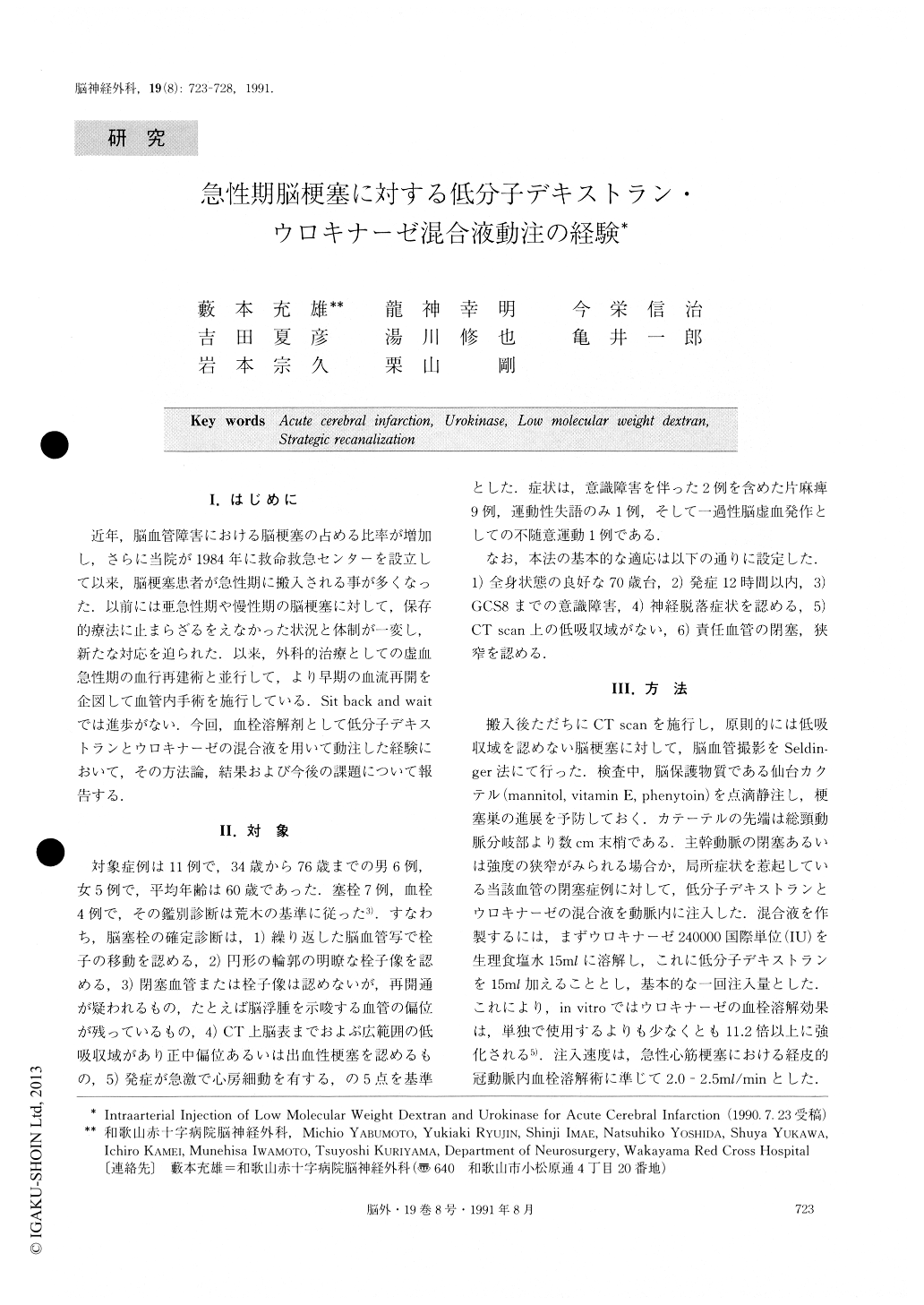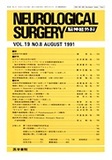Japanese
English
- 有料閲覧
- Abstract 文献概要
- 1ページ目 Look Inside
I.はじめに
近年,脳血管障害における脳梗塞の占める比率が増加し,さらに当院が1984年に救命救急センターを設立して以来,脳梗塞患者が急性期に搬入される事が多くなった.以前には亜急性期や慢性期の脳梗塞に対して,保存的療法に止まらざるをえなかった状況と体制が一変し,新たな対応を迫られた.以来,外科的治療としての虚血急性期の血行再建術と並行して,より早期の血流再開を企図して血管内手術を施行している.Sit back and waitでは進歩がない.今回,血栓溶解剤として低分子デキストランとウロキナーゼの混合液を用いて動注した経験において,その方法論,結果および今後の課題について報告する.
Abstract
Strategic recanalization of the occluded cerebral ves-sels has shown promise as a therapy for embolism and thrombosis in the acute stage. A single-dose of uroki-nase (UK) administered by intravenous and intraarte-rial routes was usually designed to restore patency of the infarct-related arteries and reperfuse the area of in-farction. However, thrombolytic agents which have been available to date may lack resoluvability, limiting the amount of doses, because overdosage may induce hemorrhagic complication.
This newly-designed therapy, intraarterial injection of UK-low molecular dextran (LMWD) complex was introduced in order to overcome the danger shown in the previous study. A high-resolvent allows cut-down of urkinase doses. Patients with acute cerebral infarc-tion were selected for treatment with the resolvent if they satisfied the following conditions : 1) up to 79 years old without serious systemic diseases, 2) less than 12 hours from the onset, 3) better than the score of 8 in GCS, 4) no abnormality in CT scan, 5) appa-rent neurological deficit and 6) responsible pathology in angiography. LMWD of 15ml, UK of 240000IU and 15ml saline-complex was injected as one course at 2.0 -2.5ml/min for 11 cases. Recanalization was observed in seven cases of embolism, and lack of reperfusion in five cases of thrombosis. The minimun effective dose was determined as 480000IU of UK in two courses. In terms of time lag from the onset, six hours may be the inferior limit, within which five of six cases (83%) suc-ceeded in the recanalization. Both the embolic group and the thrombotic one showed good recovery except for one dead case with severe embolism, and one case where the patient died because of postoperative hemor-rhagic infarction. There were no systemic and general complications.

Copyright © 1991, Igaku-Shoin Ltd. All rights reserved.


